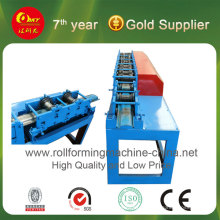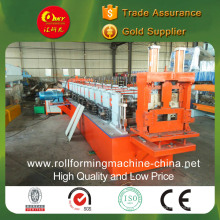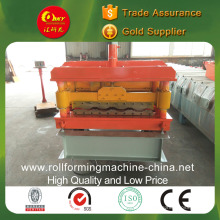Problems Needing Attention in Printing and Coating Aluminum Foil Packaging
2021-04-19
1 Proposed issue
In recent years, the quality of pharmaceutical PTP aluminum foil packaging has been continuously improved, and its application range has been continuously expanding. Applications such as food packaging and health product packaging have been applied. However, some problems occurred during the printing and coating process of PTP aluminum foil, which caused varying degrees of losses and adverse effects. In order to improve the quality of aluminum foil printing and its use, this paper chose most users to feedback quality problems, summed up several common frequency High-level, large-scale impact, and urgent need to be solved together with colleagues to discuss, the purpose is to make the use of aluminum foil packaging machinery managers can better deal with the quality problems due to them.
2 The concept of medicinal aluminum foil
The metal foil used in pharmaceutical packaging is aluminum foil, which is called aluminum foil for pharmaceutical packaging (commonly known as PTP aluminum foil). PTP aluminum foil is from English PressThrough Packaging. The more formal name in the industry is pharmaceutical packaging. Aluminum foil is also called aluminum foil for blister packaging. China's title for PTP aluminum foil used in pharmaceutical packaging materials and container registration certificates: PTP aluminum foil for pharmaceutical packaging.
One of the main raw materials for the production of PTP aluminum foil is industrial hard pure aluminum foil, which is customarily called "original aluminum foil" or original foil in the pharmaceutical packaging material industry. When used as a pharmaceutical packaging material, aluminum foil is the only metal material in the packaging material. Aluminum foil has: (1) non-toxic, odorless; (2) excellent electrical conductivity and shading; (3) extremely high moisture resistance, gas barrier and taste protection, can effectively protect the packaged material. Therefore, it is a kind of packaging material that has not been replaced so far. No matter what type of metal film is deposited or coated, it cannot completely replace aluminum foil. In the field of modern packaging and decorating, almost all composite flexible packaging materials that need to be opaque or high barrier use aluminum foil as the barrier layer. Since aluminum foil has both the above advantages, light weight, and a certain degree of strength and printability, it can also print a variety of text or patterns on it. When made into a blister pack, it can be crushed with a little pressure, and the patient can conveniently take the medicine and carry it conveniently.
3 Common Quality Problems of Aluminum Foil Printing and Coating
In the process of printing aluminum foil, there are often some quality problems, summed up with the following common defects.
3.1 Aluminum Foil Print Quality Fails to Meet Standard Requirements
The common problems that do not meet the standard requirements for printing quality are: unclear printing, misplaced printing, especially overprinted aluminum foil.
3.1.1 Typography of Printing
Causes: (1) ink viscosity is too low; (2) scraper has a wavy deformation; (3) the angle of the blade to the plate cylinder is not appropriate; (4) the tension of the aluminum foil is not good; (5) the ink dries too slowly (6) The operating speed is not coordinated. Control and improvement methods: According to the above issues to be specific treatment: (1) increase the viscosity of the ink; (2) straighten or renew the scraper as much as possible; (3) adjust the angle of the scraper and the entire line of the scraper; (4) adjust or confirm Tension; (5) Change to quick-drying solvent and increase heat to increase the drying speed; (6) Check whether the printing roller and aluminum foil run at the same speed.
3.1.2 Misprinting of Overprinted Aluminum Foil
The reason: Due to overprinting, there are many printing plates for printing, and there are many influencing factors. (1) The reason of the equipment, in the long-term production process, some of the main components of the equipment are worn, such as the bending of the printing shaft, the shaft sleeve is not refueled and cause wear, the uneven drawing roller will cause misplacement of the font in overprinting; (2) printing plate The misalignment pressure of the rollers, the uneven pressure at the left and right ends of the plate roller, the looseness of the printing roller and Other factors caused misprints and font misalignment; (3) Problems in process technology, unbalanced control of unwinding and unwinding of raw materials, Operational errors, improper blowing heat, misalignment, etc., affect the misplacement of overprinted typefaces; (4) misalignment of overprinting sets (exceeds normal error range) caused misalignment of overprinted typefaces; (5) inks with high viscosity, inaccurate overprinting, fonts Dislocation; (6) The change in the properties of the aluminum foil raw material (heavy book thickness) affects the constant tension and causes misplaced characters.
Solution: (1) The equipment should establish a circuit inspection system and refuel the operating system on a regular basis. The worn equipment parts should be replaced regularly, and the record of replacement date should be established in order to find out; (2) The post-operation method should be established in the process technology, and the opening and closing tension values, and the blowing hot air temperature, air volume, and blowing time required during operation should be established. And detected by the operator on time. And there are inspection records; (3) plate-making to meet the actual sample provided by the user and control overprinting drum actual proofing, meet the requirements by the quality inspectors signed qualified before being put into production; (4) ink viscosity according to the climate temperature changes, with The viscometer is adjusted at any time; (5) The performance of the original aluminum foil changes greatly, and it is necessary to coordinate the exchange of raw materials.
3.2 Ink Color Differences
In general, the color of the aluminum foil produced for the first time will have a slight color difference with the reference sample, mostly due to the difference in ink material or substrate. It can be confirmed by the buyer at the supplier's site when necessary, and it must be strictly controlled as a production printing process.
3.2.1 The color is too light
(1) The concentration of printing color in the same batch is insufficient: Causes: 1) Too much solvent in ink; 2) Ink precipitation; 3) Intaglio engraving is too light. Solution: 1) Add new ink, adjust the ink to an appropriate viscosity; 2) Mix the ink thoroughly before putting it in the ink tray, and warm it up in the winter in winter.
(2) The printing color of the same batch is too dark: Causes: 1) The viscosity of the ink is too large; 2) The ink concentration is too large; 3) The gravure engraving is too deep or damaged. Solution: 1) Add a specified amount of solvent to the ink, adjust the ink to an appropriate viscosity, 2) add a diluent, and 3) recreate the gravure cylinder or fill the dent.
3.3 Printing aluminum foil wrinkles
There are many reasons for wrinkling. There are wrinkles in the printing process, aluminum foil in raw materials, wrinkles in improperly adjusted pharmaceutical packaging equipment, and wrinkles in aluminum foil heat sealing materials. Only the wrinkles appearing in the printing process are analyzed below.
Causes of wrinkling during printing: (1) Foil edge loosening; (2) Slack at center of raw material; (3) Inappropriate printing tension, or wrinkles on substrate itself; (4) Wrapping of aluminum foil around guide rollers or rubber The angle on the roller is too large; (5) The hardness of the rubber roller is not enough; (6) The machine or roller and the guide roller are not properly arranged.
Wrinkle solutions during printing: (1) Use eccentric drum shafts; (2) Use bow rollers, tension adjustment rollers; (3) Adjust tensions properly; (4) Adjust foil winding angles; (5) Use high hardness Rubber roller; (6) Study the assembly position of the machine and the roller.
3.4 Problems that seriously affect the quality of pharmaceutical packaging
3.4.1 The foil hole of the printed substrate exceeds the standard
According to the provisions of GB: "PTP aluminum foil pinhole diameter greater than 0.3 mm can not have, diameter 0.1-0.3 mm per square meter can not be more than one." PTP aluminum foil pinholes are due to penetrability defects, affect the barrier properties of aluminum foil (gas barrier, moisture barrier, light blocking), so that the packaged drugs are affected by oxygen, water vapor or light to reduce efficacy, when severe Even deterioration can not be used. As the water vapor transmission rate and the oxygen transmission rate are important indicators of aluminum foil as a packaging material, the specified value is generally low. At the same time, the aluminum foil itself, especially the aluminum foil with a thickness of 0.02 mm or less, is apt to be wrinkled, easily cracked, and easy to generate pinholes. Therefore, it is difficult to detect the amount of water vapor permeation and oxygen permeation of the pure aluminum foil, and the dispersibility of the test data is large. Aluminum foil pinholes are the factors that lead to the permeability of aluminum foils. In general practical applications, only checking the size and number of aluminum foil pinholes can illustrate the problem. According to relevant research, the gas permeability of pure aluminum foil is directly proportional to the concentration difference of gas. When the pinhole radius of aluminum foil is greater than the thickness of aluminum foil, it is proportional to the size of pinhole radius. Therefore, before the printing of aluminum foil, the quality of the original aluminum foil should be inspected, and in particular, the pinhole degree, tear strength, and tensile strength of the original aluminum foil should be sampled and examined. At present, China's aluminum foil manufacturers have reached the national standard for aluminum foil pinhole requirements and can guarantee stable quality, but some of the few PTP aluminum foil manufacturers are simply to reduce costs, to seize the market at low prices, often using some unqualified aluminum foil, so that Pinhole degree exceeded. In addition, there are many crystal spots on the surface of aluminum foil, and there are many oil stains on the surface of the aluminum foil. There are many phenomena such as wrinkles, indentations, and stripes in the original aluminum foil. This not only affects the printing quality of characters and patterns, but also affects the coating quality of protective agents and adhesives, thereby affecting the pharmaceutical packaging. Sealing performance.
A simple way to determine the size of the pinhole is to take a piece of the original aluminum foil and observe the presence or absence of pinhole light leakage. When professionally testing the pinhole degree of aluminum foil, use a detection device as the pinhole table, use a wooden box of 800 mm×600 mm×300 mm or an appropriate volume, install a 30 W fluorescent lamp inside the wooden box, put a glass plate on the wooden box, and black the glass plate The paper leaves a space of 400 mm x 250 mm to check the pinhole of the sample. Take 400 mm × 250 mm specimens in the finished foil and place them one by one on the pinhole inspection table. Check the pinholes in the dark place. The requirements for the aluminum foil pinholes are: (1) There should be no intensive, Continuous, periodic pinholes; (2) Cannot have pinholes with a diameter greater than 0.3 mm, and pinholes with a diameter of 0.1-0.3 mm cannot have more than one pinhole per square meter. The pinhole degree of aluminum foil is a very important technical indicator for the inspection of PTP aluminum foil. It will be related to the sealing performance of the packaging medicine, so it is necessary to pay great attention to this inspection.
3.4.2 Finished protective layer after printing
According to the process requirements, after the aluminum foil printing, the surface needs to be coated with a protective agent to protect the printed text pattern. Of course, the protective layer also has the function of preventing the aluminum foil from contacting the adhesive of the inner layer and the inner layer of the ink during the winding process to cause contamination of the medicine. , It can also prevent the self-oxidation and deterioration of the surface of the aluminum foil and prevent the abrasion and peeling of the ink layer on the surface of the aluminum foil, and at the same time, it also improves the heat resistance when the bubble cap is pressed. Some manufacturers reduce the cost, cut corners, and do not apply protective agents. As a result, drug manufacturers often find that printed text patterns are blurred when they are heat-sealed, which makes them easy to deink and cause losses.
In fact, the user can easily determine whether the aluminum foil is coated with a protective layer before use. The method is: cutting an aluminum foil, and then using a lighter to grill the protective layer for a few minutes, if it is found that there is no change in the surface of the protective layer or black smoke stains, once Wipe off, that is, unqualified aluminum foil products without a protective layer; if it is found that the protection layer turns yellow and appears like a halo-like pattern, it won't fall off after wiping, that is, a product coated with a protective layer. However, in order to ensure the use of quality, a better way is to use a heat sealer to detect the heat resistance of the protective layer, the heat resistance of the protective layer is good or bad to determine whether the PTP aluminum foil in the packaging of drugs when the packaging machine heat roller (version) is correct Aluminum foil surface damage caused by graphics. During the test, a 2 kg pressure heat sealer was used to heat and press the surface of the aluminum foil at 200 °C for 1 s to observe whether the printed graphics were significantly detached.
3.4.3 Aluminium foil coating adhesive is not uniform
Aluminum foil printing surface protection agent, while the other side of the adhesive, adhesive coating is uniform, with or without a leak will directly affect the quality of the blister packaging, sealing performance.
Simple identification method: In the place with sufficient light, observe with the naked eye, if there is a clear linear line stripe, or a very short intermittent or uninterrupted straight line, it is an unqualified product. The adhesive layer of the qualified product should be very smooth and flawless. Detection and quantification method: Analyze the balance by one ten-thousandth, take 5 pieces of 100 mm×100 mm sample in the finished product, weigh them separately, and wipe off the adhesive with ethyl acetate, butanone or other solvents, and then weigh. Quantity; the difference between the two is the amount of coating, and the average value of 5 pieces of coating amount is determined, and the difference between the coating amount and the average value of each piece should be no more than ±12.5%. In addition, the thickness of the adhesive layer has a great influence on the firmness of the adhesive, and the adhesive layer is too thin. When the PVC hard film is hot-pressed, the adhesive fastness may be reduced due to lack of material. A heat sealer can be used to determine the heat seal strength of the adhesive layer to determine whether it meets the quality requirements. When testing, a 100 mm square is to be die cut, with a pressure of 2 kg and a temperature of 150 °C. The PVC sheet heat seals for 1 s. Then use a 15 mm special die cutter to cut into 15 mm strips. Placed on the tensile tester to test the size of the pull force is the heat seal strength. The heat seal strength of aluminum foil adhesive layer and PVC should be ≥7.0 N/ 15 mm.
Brazing Aluminum coil manufacturer, standard width 500-1750mm, can provide special size. Thickness from 0.2mm to 10mm or higher. Aluminum alloy code can be 1050, 1060, 1070, 1100, 1235, 3003,3105, 4343, 5052, 5059, 5182, 5454, 5083, 6082, 6182, 8006, 8011 etc. The aluminum strip coil roll which we produced for many application like construction, electronics, automotive, pharmaceutical, food packing, manufacturing, transportation, and so on.
Aluminium Strip, Aluminium Foil Strip, Aluminum Strip Roll, Aluminum Brazing Strip
Hangzhou Finding International Co., Ltd. http://www.szaluminumsheets.com






